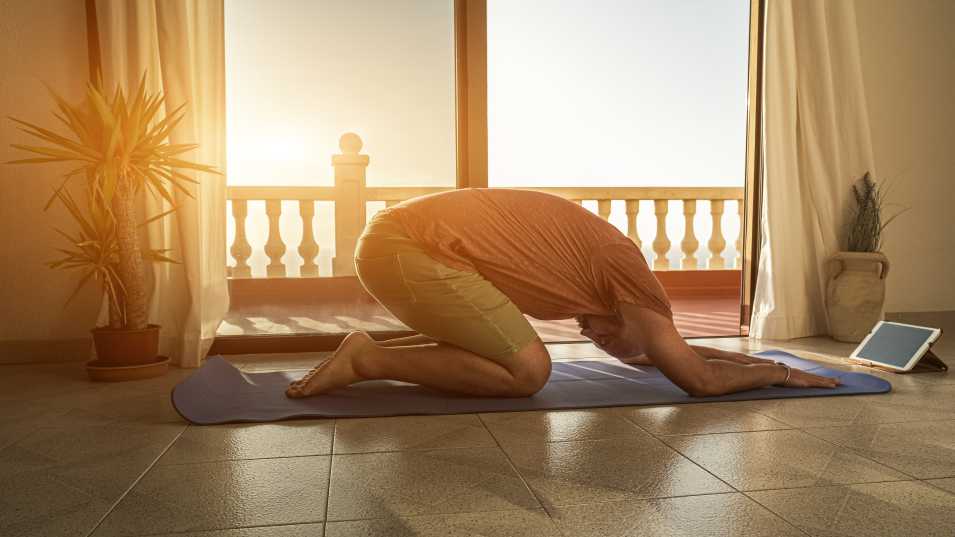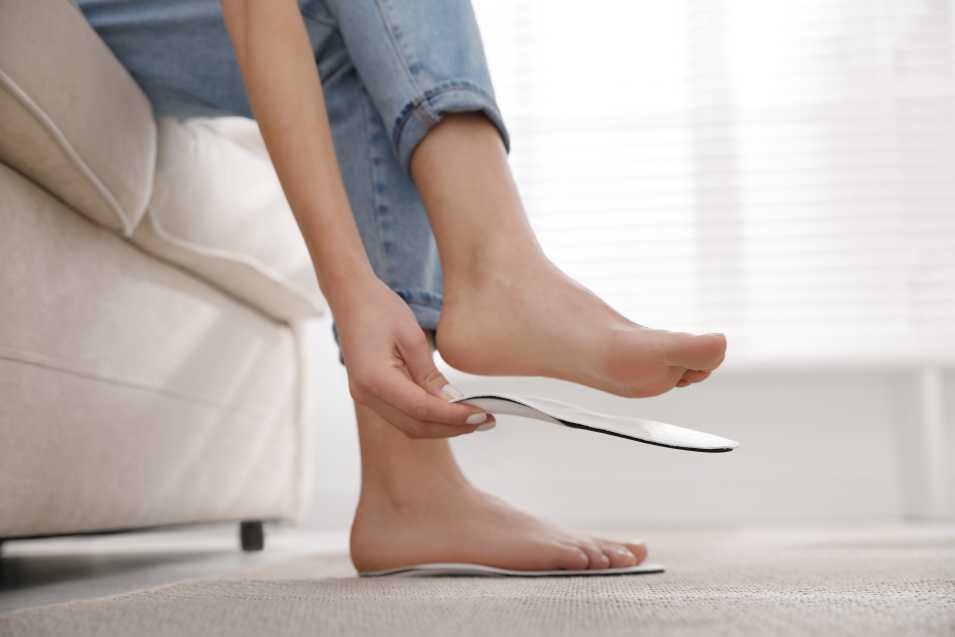Are you seeking strategies to enhance the pace of your recuperation following an injury or surgical procedure within the confines of your own residence? There is no need to search any further.
Whether you’re recovering from a sports injury or a joint replacement or want to improve your overall physical well-being, these exercises are designed to target specific areas of your body and promote faster healing. From gentle stretches to resistance training, we’ve got you covered.
Say goodbye to long waits at the physical therapist’s office and hello to a convenient and effective recovery plan right at your fingertips. Let’s get started on your journey to a faster recovery and a stronger you!
Benefits of At Home Physical Therapy Exercises
Engaging in at-home physical therapy exercises offers several benefits:
- It allows you to have control over your rehabilitation process. You can tailor the exercises to your specific needs and progress at your own pace.
- Eliminating physical therapist visits saves time and money. You may get similar effects at home with a good fitness routine.
- At-home physical therapy exercises promote a sense of ownership and empowerment over your recovery journey.
By actively participating in your healing process, you will regain physical strength and boost your mental well-being.
Basic Stretching Exercises for Common Injuries
Incorporating stretching exercises into a physical therapy regimen is crucial. They help improve flexibility, increase range of motion, and prevent muscle imbalances. Here are some basic stretching exercises for common injuries:
1. Hamstring Stretch: Assume a seated position on the periphery of a chair, ensuring that one of your lower limbs is elongated in a straight manner, directed forward. Initiate a forward lean from the hip region while maintaining proper spinal alignment, until a subtle sensation of tension is perceived in the posterior aspect of the thigh. Please maintain the position for a duration of 30 seconds, thereafter proceed to alternate legs.
2. Calf Stretch: Assume a position in which you are oriented towards a vertical surface, with one foot positioned anteriorly to the other. Position your hands against the wall in order to provide stability. Maintain the extension of your rear leg while ensuring that your heel remains in contact with the ground. Proceed to flex your front knee until a sensation of tension is experienced in the calf muscle. Please maintain the position for a duration of 30 seconds, after which you may proceed to alternate legs.
3. Shoulder Stretch:Assume an upright posture with your feet positioned at a distance equivalent to the breadth of your shoulders. Extend one arm horizontally across your thorax, employing the contralateral arm to facilitate its inward displacement towards the torso. One should get a sensation of stretching in the shoulder and upper back region. Please maintain the position for a duration of 30 seconds, after which you should proceed to alternate arms.
Related Article: Power of Exercise Therapy
Strengthening Exercises for Specific Body Parts
In conjunction with stretching, the incorporation of strengthening exercises is necessary for the restoration of muscular strength and enhancement of general functionality. Presented here are a selection of workouts designed to enhance the strength of several specific anatomical regions:
One method for strengthening the quadriceps muscles involves assuming a seated position on a chair, ensuring that both feet are in contact with the floor. Gently extend one leg in a gradual manner, raising it from the surface while maintaining a straightened knee. Maintain the leg position for a brief duration, followed by a controlled descent of the leg. Perform ten repetitions on each leg.
2. Core Strengthening: Assume a supine position with the knees flexed and the feet resting flat on the floor. Position your hands at the posterior aspect of your cranium, with your elbows extended laterally. Activate your core musculature and gradually elevate your head and shoulders from the surface, flexing in the direction of your knees. Maintain the position for a brief duration of a few seconds, followed by a controlled descent back to the initial position. Please reiterate the statement on ten separate occasions.
3. Ankle Strengthening: Assume a seated position on a chair, ensuring that both feet are firmly planted on the floor. Elevate a single foot off the ground while maintaining contact between the toes and the floor. Perform a gradual rotation of the foot in a circular trajectory, both in a clockwise and counterclockwise direction. Perform ten repetitions in both directions, followed by switching feet.
It is advisable to commence with a lower level of resistance and progressively augment it over time as one’s strength improves. It is imperative to attentively heed one’s bodily signals and refrain from excessive exertion.

Balance and Coordination Exercises
Balance and coordination exercises are essential for improving stability and preventing falls. They are particularly beneficial for individuals recovering from lower limb injuries or surgeries. Here are some balance and coordination exercises you can do at home:
1. Single Leg Stance: Stand near a wall or counter for support. Lift one foot off the ground and balance on the other leg. Make an effort to keep your equilibrium for the next thirty seconds, and then switch legs. As you progress, challenge yourself by closing your eyes or standing on an unstable surface.
2. Heel-to-Toe Walk: Find a clear place to walk straight. Step with the heel of one foot in front of the toes of the other. Walk for 10-15 steps, then turn around and repeat. Focus on maintaining a smooth and steady gait.
3. Standing Balance Exercises: Stand with your feet hip-width apart. Lean on one leg and lift the other, bending at the knee. Hold for 30 seconds, then switch legs. As you become more confident, try performing the exercise without holding onto any support.
Related Article: Breema Bodywork
Cardiovascular Exercises for Overall Fitness
Engaging in cardiovascular exercises improves your overall fitness, promotes circulation, and aids in the recovery process. Here are some cardiovascular exercises you can do at home:
1. Walking: Walking is low-impact and adaptable to your fitness level. Set low distances and increase as you build strength and endurance. Most days should include 30 minutes of brisk walking.
2. Cycling: If walking is not an option, cycling is another excellent cardiovascular exercise. You can use a stationary bike or go for a bike ride outdoors. Start with a comfortable resistance level and gradually increase as your fitness improves. Aim for 20-30 minutes of cycling at a moderate intensity.
3. Jumping Jacks: A simple but efficient approach to raise your heart rate is jumping jacks. Stand with feet together and arms at sides. Jump with your feet shoulder-width apart and arms aloft. Jump again and start again. Repeat 1-2 minutes.
Always warm up before commencing cardiovascular exercise and gradually increase intensity. Stay hydrated and listen to your body.
Progressing Your At Home Physical Therapy Routine
As you continue your at home physical therapy exercises routine, it’s important to progress the exercises to challenge your body and promote further improvement. Here are some ways to progress your routine:
1. Increase Resistance: If you’re using resistance bands or weights, gradually increase the resistance as you get stronger. This will help build muscle and improve overall strength.
2. Increase Repetitions: As you become more comfortable with an exercise, increase the number of repetitions. This will further challenge your muscles and promote endurance.
3. Add Variations: Introduce variations to your exercises to target different muscle groups or add complexity. For example, you can perform lunges with a twist or add a balance component to your squats.
Safety Tips for At Home Physical Therapy
While at home physical therapy exercises can be highly effective, it’s important to prioritize safety to prevent further injury or setbacks. Here are some safety tips to keep in mind:
1. Listen to Your Body: How your body feels during and after each exercise. If you experience pain or discomfort, modify or stop the exercise. It’s important not to push through pain.
2. Use Proper Form: Ensuring proper form is of paramount importance in order to mitigate the risk of injury and optimize the advantages derived from each activity. For help regarding the appropriate form, it is advisable to seek clarification from a healthcare provider or physical therapist.
3. Start Slowly: Gradually ease into your at-home physical therapy routine. Start with gentle exercises and progress as your body allows. Rushing into intense exercises can lead to muscle strain or other injuries.
19. Warm-Up and Cool Down: Always start your exercise session with a proper warm-up to prepare your muscles for activity. Similarly, cool down with gentle stretches to promote relaxation and prevent muscle soreness.
4. Stay Hydrated: To maintain proper hydration, it is recommended to consume ample amounts of water before to, during, and subsequent to engaging in physical activity. Adequate hydration is crucial for proper muscular performance and general physical health.
At home physical therapy exercises are easy and efficient for speeding rehabilitation and regaining strength and mobility. Adding stretching, strengthening, balance, and aerobic activities to your program will speed up healing and enhance your health. Before starting a new fitness regimen, visit your doctor or physical therapist and consider safety.
Related Article: Best Rated Physical Therapy Centers
